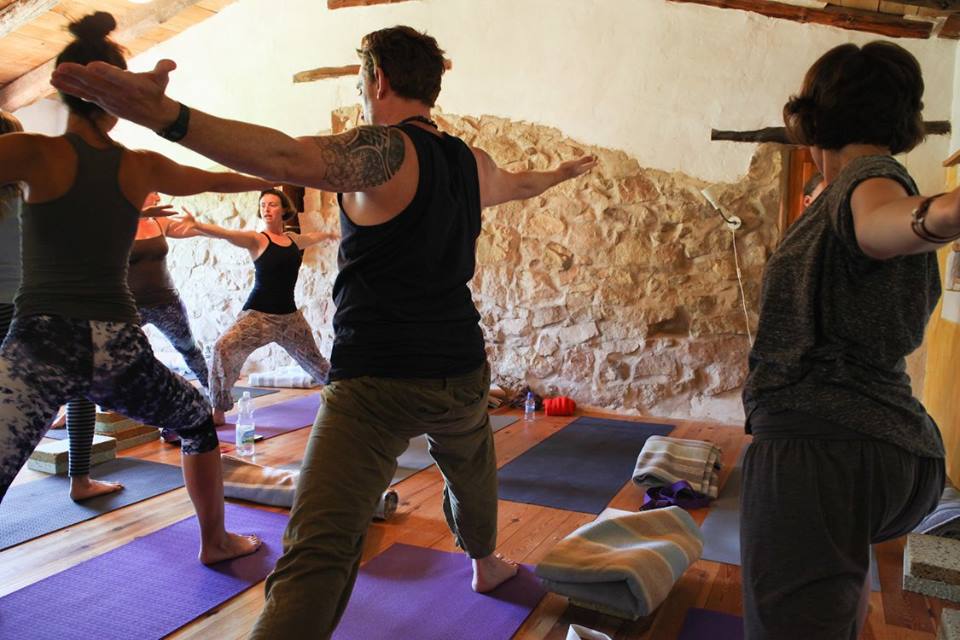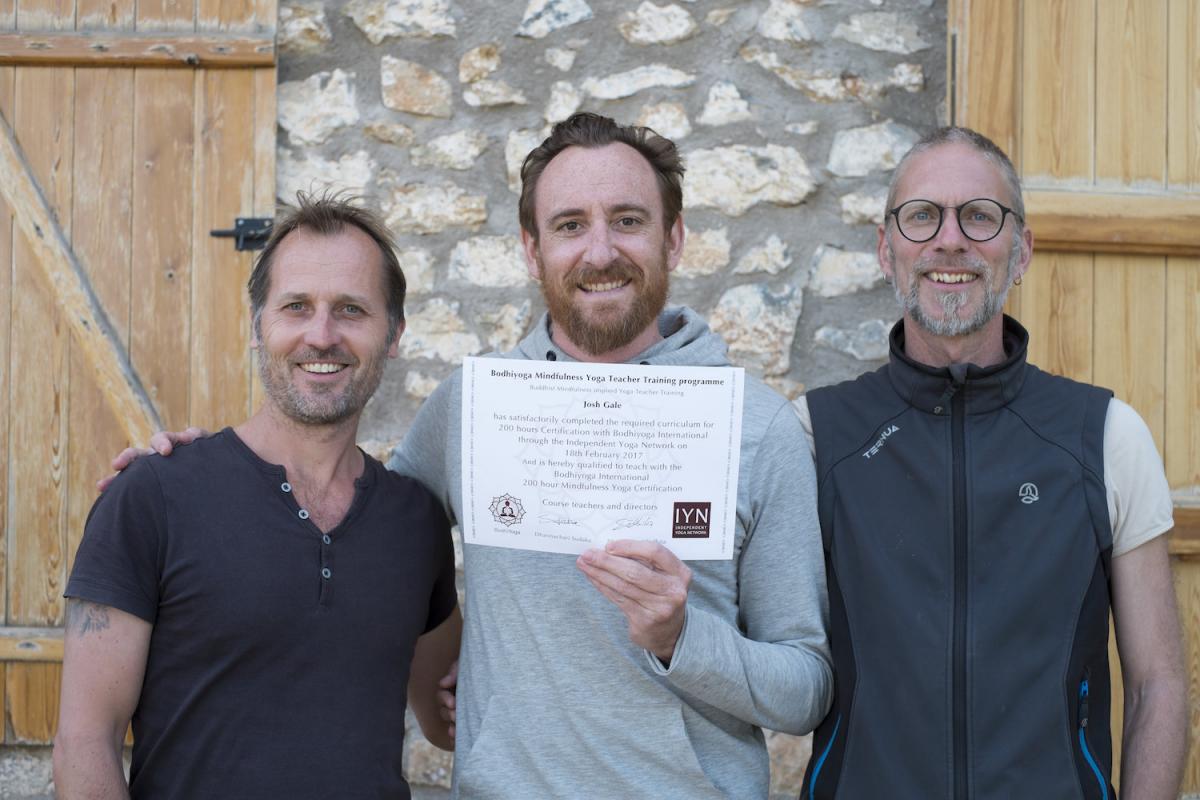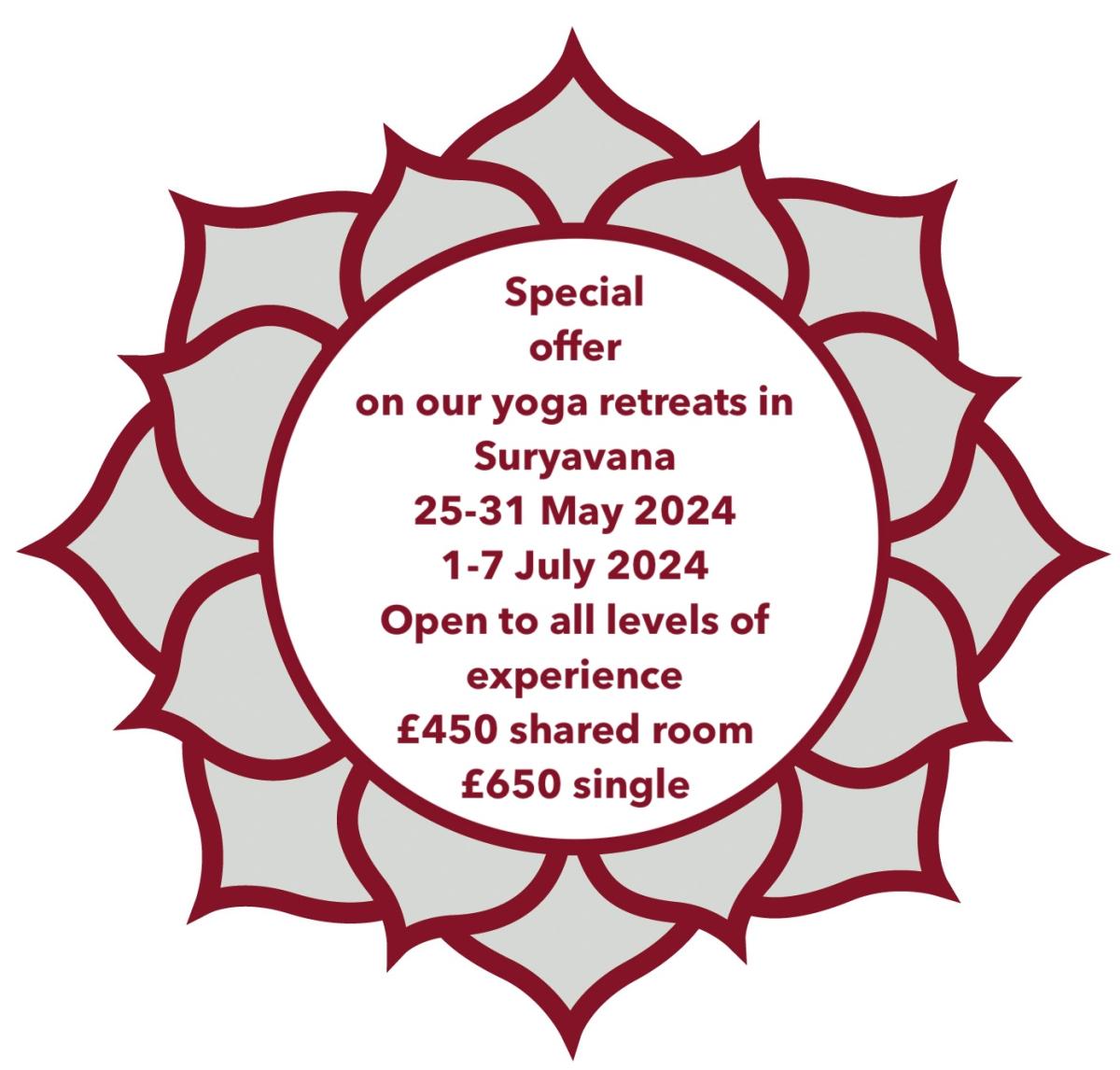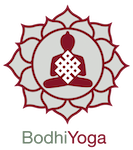Daydreaming of being a yoga teacher - by Josh Gale
 Josh Gale is a certified 200-hour Bodhiyoga teacher living in Germany. As he outlines below, getting going as teacher is anything but easy. But with a bit of perseverance he managed to escape the corporate grind and did it.
Josh Gale is a certified 200-hour Bodhiyoga teacher living in Germany. As he outlines below, getting going as teacher is anything but easy. But with a bit of perseverance he managed to escape the corporate grind and did it.
It all started one uneventful day in an uneventful month in a year (2014) of fairly intense suffering while I was working for a corporation so boring that if I merely told you it’s name, an acronym of pure tedium, it would take one year off your life.
I was at my desk, looking at one of those pointless spreadsheets, and entering how many likes the company’s Facebook page had earned that week. It wasn’t many. Besides, no one cared. It was just a precaution for middle management.
The task was debilitating, so I clicked over to a yoga website. I read some malarkey about how tough it is to become a yoga teacher, one of those ubiquitous “10 reasons” pieces, and thought it couldn’t possibly be more difficult than tracking the likes gained by the world’s most boring company.
That’s where my journey to become a yoga teacher began. At least partially. I was doing yoga everyday at home or during my lunch break, and a variety of Buddhist meditation practices. I wanted to go deeper into both practices. I found the asana practice brought me down out of my busy thinking mind, and into my body, supporting my meditation practice.
I got curious about whether there were any yoga teacher training courses with a Buddhist orientation. On the company’s dime, I googled “mindfulness yoga” and up came Bodhiyoga, Spain – I knew I’d found what I was looking for. I had a Skype call with Sadhita and from that conversation decided I would do the teacher training course in summer, 2014. I had to get the hell out of that company.
And I did – I got fired. No reason was given. Just I didn’t fit or seem enthusiastic about the job. Not particularly surprising. It came as a shock because I was living in Heidelberg, Germany where it’s difficult to find English-language jobs, and my wife and I only had the one income. It was also a relief. On my last day, on my way to the office, I found a 50 Euro note on the footpath; I saw it as a sign it was all for the best.
In April 2015, I landed a job working as an editor for a communications agency in Austria. I moved there, some 600km away from my wife. That was the bad news. The good news was the job was exciting, and well paid. The company owner asked me to teach yoga to my colleagues. I began with one class a week, and eventually did two or three a week. I really enjoyed it. Those classes inspired me to continue with my plan to become a teacher.
 I completed Bodhiyoga’s three-week residential component of the teacher’s training course in July, 2015. Ten months later I handed in all of the course assignments and received official certification. It was a long, complicated journey, but I got there. The next question was, how would I teach?
I completed Bodhiyoga’s three-week residential component of the teacher’s training course in July, 2015. Ten months later I handed in all of the course assignments and received official certification. It was a long, complicated journey, but I got there. The next question was, how would I teach? After 18 months of a long distance relationship, I moved back to Heidelberg to be with my wife. The problem of finding an English-language job persisted. There were none. At least none that didn’t involve mind-numbing, technological tedium. I just couldn’t do it.
I discovered the German state provides support to people wanting to start small businesses. I decided to apply to start a yoga business, and therein began a highly bureaucratic process that lasted four months. I had to write a thesis length business plan, replete with researched discussion about the yoga industry, the yoga scene in Heidelberg, a sophisticated justification for why my business idea would be a winner, and finally – and most painstaking – a detailed financial plan. Mein Got! It was hard work. But also educational. I now know how to write a business plan – to the German standard.
The plan was accepted. I had six months of support to make it happen. A graphic designer friend of mine came onboard and designed the logo, flyers, stickers and posters for the business, which we called Vagabond Yoga with the tagline, “trust your path”.
Another friend offered me a room in her osteopathy clinic to teach in. It isn’t big, but is ideal for a start. It’s better to begin with a smaller room. For one, it’s cheaper. And it doesn’t feel weird if only two or three people show up. So far the room has served it’s purpose.

I’ve completed two courses, one four week, and one six week. So far, it’s been friends and friends of friends who have joined each course. I’ve been distributing flyers, plastering stickers all over town and finding sneaky places for posters. A Facebook page (with too few likes!), and a blog are on the go. But no bites. After the second course I haven’t been able to find enough people to run another one.
As many experienced teachers have told me, it takes two or three years – plus a lot of patience, grind and usually a supplementary income – to build a client base. There are no short cuts.
Some beginning yoga teachers take a bank loan to invest in their business. Maybe for renting a room, designing their brand, website, marketing material, and advertising. This gives a big, early boost to brand awareness – the more people who know about you the better. There’s also a strong argument for presenting your enterprise professionally right from the beginning. Many yoga teachers around Heidelberg stick up white A4 sheets with ugly, block lettering on lampposts to advertise themselves. Sure, it saves money, but at what cost?

I haven’t taken a bank loan, and won’t. Instead, I’m taking the light and fast, guerrilla approach to building a business. Minimal investment, lots of ground work. One of the most important points I’ve learned about starting out as a yoga teacher in a yoga saturated city is that the key to success is creating relationships with people.
When I told my mentor Martina Weickel, who’s been teaching yoga for 30 years and teaching teachers for 20 years, that I’d distributed hundreds of flyers and hadn’t received a single enquiry email back, she wasn’t at all surprised. She said flyers don’t really work. Not with yoga anyway. When it comes to yoga it’s all about building one-on-one relationships. People want to know who you are, whether they like your vibe, feel like they can trust you and are the sort of person they would be comfortable learning yoga from. And it’s through these people the most important type of marketing happens – word-of-mouth. I’m not saying flyers are unnecessary. They are helpful, especially at certain stages of your business’s development. I have tried to create a cohesive brand identity and communication style. I believe this is important. But I am saying that the real marketing work, so to speak, the main thrust at the beginning, without a doubt should be social networking. It took me too long (I’m an introvert) to understand this. Do yourself a favour and make it a priority from the beginning.

To build relationships and encourage word-of-mouth, I’m offering donation-based outdoor classes via meetup.com, Fresh Air Yoga and Internations, and trying to find other venues I can teach at to get word out. I’ve been offering about four donation-based classes by the Neckar River each week. It started small with two or three people coming. Now it’s picking up. Nine people came to my last class. I’m offering more creative events, too. For example an outdoor class on a full moon night, followed by meditation and a glass of wine. It’s not just about trying to build a business. I’m doing what comes from the heart.
The best development, however, came recently. A friend works at the DAI Heidelberg, a German-American cultural centre, which is looking to youthify it’s image and activities. She thought yoga would be a perfect fit. She asked me to come up with some proposals and after some ideas and discussion we have now planned three classes each week. I also gave my first half-day workshop on mindfulness yoga there. Many workshops are now in the pipeline. Things are gradually starting to happen.
Looking back now, the biggest challenge wasn’t money, or finding clients. It’s been having confidence in myself. My “trust your path” tagline is a reminder, rather than something I’ve achieved. Too often, I’ve doubted my path, doubted whether I should really teach yoga. I’m a 40-year-old dude, and hardly an Instagram-photo-friendly, yoga hunk as so often depicted in the social media of the yoga scene. After years of basketball and running, my hamstrings are as tight as bowstrings. I weigh 90kg and have the grace a rugby player.
It’s these kinds of self criticisms and comparisons that sometimes creep into the mind, cause me to doubt, and lose motivation. In the Buddhist framework of the Five Hindrances to spiritual life, doubt is considered the most dangerous hindrance because it can lead us to give up our practice entirely. It can be paralysing. The antidote to doubt is trust. I’m not saying it all comes down to trust. No. Hard work and dedication are required. But these must be based on a foundation of positivity for our intentions and direction. This is trust.
 As Sadhita said on a recent yoga retreat, we can trust that if we put effort into creating certain causes and conditions, the results will eventually bear fruit. That is the way of the world. If you place a seed in the earth, water it, and give it sunlight, a plant will grow. Similarly, practice yoga, maintain a strong sadhana, build a business and spread the word with consistency and the results will eventually come. We just need to keep working at it. And trust.
As Sadhita said on a recent yoga retreat, we can trust that if we put effort into creating certain causes and conditions, the results will eventually bear fruit. That is the way of the world. If you place a seed in the earth, water it, and give it sunlight, a plant will grow. Similarly, practice yoga, maintain a strong sadhana, build a business and spread the word with consistency and the results will eventually come. We just need to keep working at it. And trust.I recently interviewed my mentor Martina Weickel for an episode for our monthly podcast. Martina spends weeks every year in retreat, lives simply and supports an orphanage in India. Yoga to Martina is a way of life, rather than a series of physical movements we do on a rectangular mat. She told me in the old days in India, a real yoga teacher wouldn’t even put a sign advertising themselves on their front door. Yet people would come. The depth of their practice brought people, and is what qualified them as a “yoga teacher”.
This reminds me that to be a yoga teacher, one must first be a dedicated student. I might know a few asanas, but this has little to do with the yoga tradition or the Dharma. These are about spiritual transformation. To teach this, undergoing the process of transformation is first required. Otherwise the title is meaningless. I find reminding myself of this helpful because it brings me back to my deeper intention: spiritual transformation and insight. I will need my whole life for this. It can’t be rushed.
In this deeper sense, you can say my journey to being a yoga teacher has just begun. I’ve become a dedicated student on the path. But in the more worldly sense, I’m also teaching yoga, and love doing so. For sure, making it self-sustaining is definitely hard work, maybe even a long shot. But the journey itself is amazing, and it beats sitting in front of a computer all day at the office.


